Last Updated on 21 July 2025 by Greg Brookes
Over 65,000 people now receive my weekly newsletter, and one of the most common questions I get is: Can you build muscle with kettlebells?
The answer is yes, but only if you train the right way.
Kettlebells are often seen as tools for fat loss or conditioning, but they are incredibly effective for building muscle when used correctly. Over my 15+ years of coaching, I’ve worked with men and women looking to add functional size and strength without the joint pain that often comes from traditional bodybuilding workouts.
In this article, I’ll share the best kettlebell workout for muscle gain, along with the exact exercises, sets, reps, and programming I use with my clients to help them get bigger, stronger, and more powerful.
Why Use Kettlebells for Muscle Gain?
Most people associate kettlebells with conditioning or fat loss, but they’re also highly effective for hypertrophy when you understand how to use them.
Kettlebells allow for:
- Joint-friendly strength work: Kettlebell lifts are more natural and forgiving on the joints compared to machines.
- Greater range of motion: Exercises like the clean and press challenge muscles through a fuller range, which is key for growth.
- Unilateral loading: Using one kettlebell at a time helps fix imbalances and recruit stabilisers, leading to better overall muscle development.
- Time-efficient hypertrophy: By using super sets or complexes, you can build muscle while also keeping conditioning high.
Key Principles for Kettlebell Hypertrophy
If your goal is to build muscle, you need to follow certain guidelines. Kettlebells work well for hypertrophy when you stick to these principles:
Reps and Sets
- Hypertrophy range: 5 to 30 reps per set
- Stop 2-4 reps shy of failure: Training to absolute failure is unsustainable long term and increases injury risk.
- Volume: Aim for 3-10 sets per muscle group per workout.
Progressive Overload
- Increase reps, load, or time under tension week by week.
- Use tempo control (e.g., 3 seconds down, 1 second up) to challenge the muscles without needing heavier weights.
Best Kettlebell Exercises for Muscle Building
Not all kettlebell exercises are equal for muscle growth. You need to prioritise grind-based movements, these create muscle tension and time under load, which is essential for hypertrophy.
Ballistic exercises like swings and snatches are great for conditioning, but don’t provide the muscle-building stimulus needed to maximise size. For hypertrophy, think slower, controlled movements that allow you to really feel the muscles working.
Kettlebell Clean & Press
(See full breakdown in: Kettlebell Clean and Press)
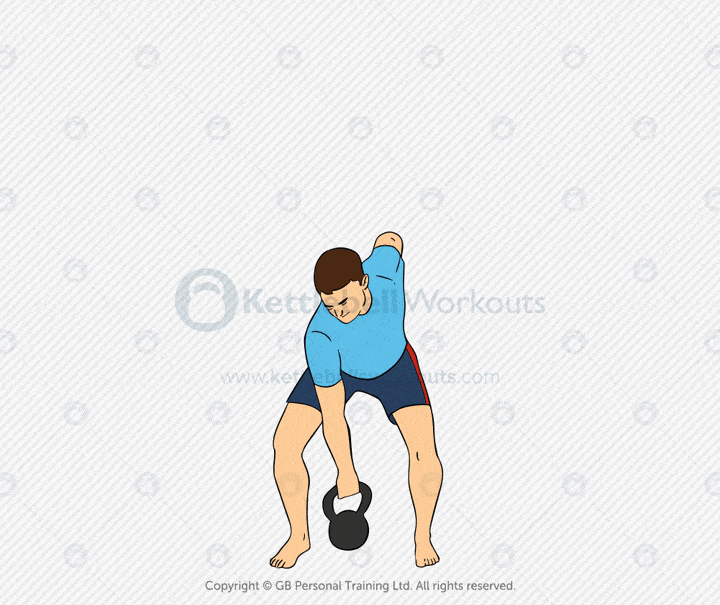
- Muscles Worked: Shoulders, triceps, upper chest, traps, core
- Why It Works: The clean moves the bell into position, but the press phase is where you get maximum muscle recruitment in the shoulders and triceps. Using a controlled tempo ensures full muscle engagement without momentum.
Kettlebell Lunges
(See full breakdown in: Kettlebell Racked Reverse Lunge)

- Muscles Worked: Quads, glutes, hamstrings, core
- Why It Works: The front rack position adds a challenge to your core and upper back while developing unilateral leg strength. Lunges also promote balance and joint stability, which supports long-term progress.
Kettlebell Rows
(See full breakdown in: Kettlebell Bent Over Row)
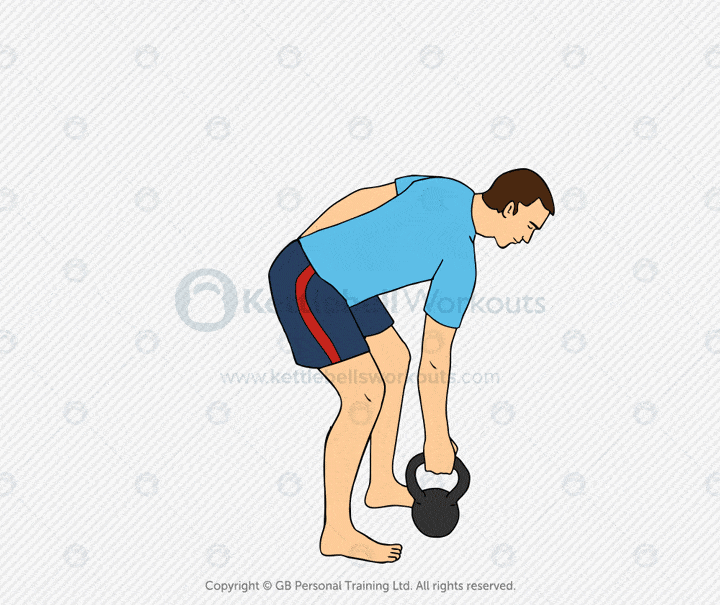
- Muscles Worked: Lats, rhomboids, biceps
- Why It Works: Rowing movements are essential for back development. Focus on slow, controlled pulling to fully engage the lats and upper back while reducing momentum.
Kettlebell Single Leg Deadlifts
(See full breakdown in: Kettlebell Single Leg Deadlift)

- Muscles Worked: Glutes, hamstrings, lower back, core
- Why It Works: This movement is ideal for posterior chain development and improving balance. It helps correct asymmetries and builds bulletproof hamstrings and glutes.
Kettlebell Goblet Squats
(See full breakdown in: Kettlebell Goblet Squat)
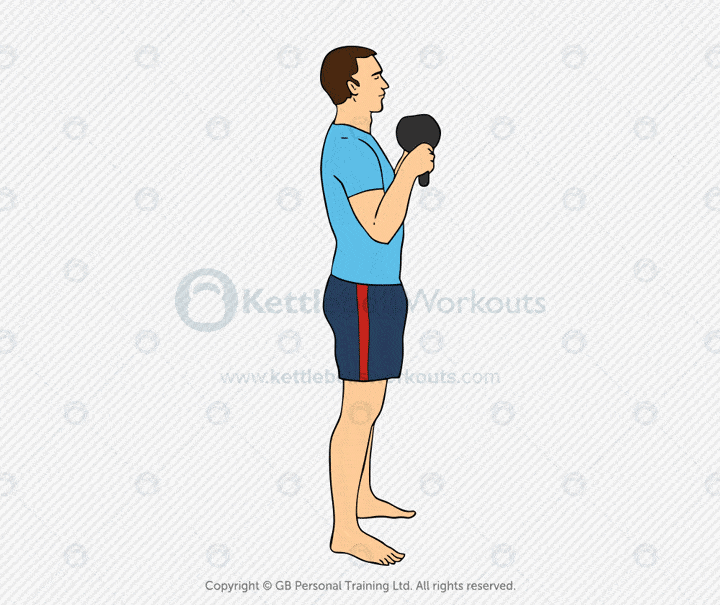
- Muscles Worked: Quads, glutes, adductors, core
- Why It Works: Holding the kettlebell at chest height forces the core to stay engaged while allowing a deep squat. Adding a pause at the bottom increases time under tension for even more muscle-building stimulus.
Each of these exercises can be progressed by increasing load, using double kettlebells, slowing the tempo, or adding volume over time.
Sample Kettlebell Muscle Building Workout
Perform this 2-4 times per week. This routine targets the full body, ensuring balanced development and functional strength.
Warm Up: Preparing for Your Kettlebell Muscle Session
The warm up is essential to prepare the joints, activate stabilisers, and prevent injury. It also builds the mind-muscle connection before heavier lifts.
Turkish Get Up (half or full)
(See full breakdown in: Kettlebell Turkish Get Up)
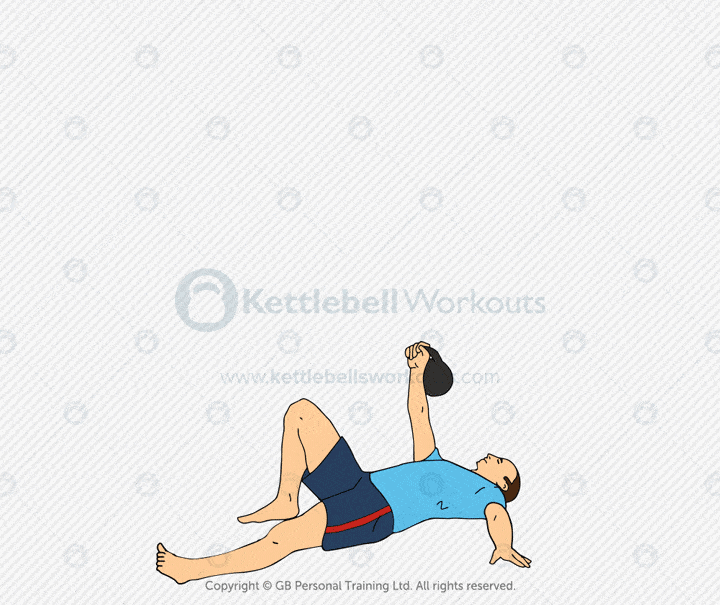
- Reps: 2 per side (light weight)
- Purpose: This movement engages the shoulders, hips, and core while improving joint control and coordination. It’s an excellent primer for loaded carries and pressing.
Kettlebell Halo
(See full breakdown in: Kettlebell Halo)

- Reps: 5 each direction
- Purpose: Mobilises the shoulders and upper back, helping reduce stiffness and prepare the rotator cuff for safe pressing and lifting overhead.
Kettlebell Slingshot
(See full breakdown in: Kettlebell Slingshot)
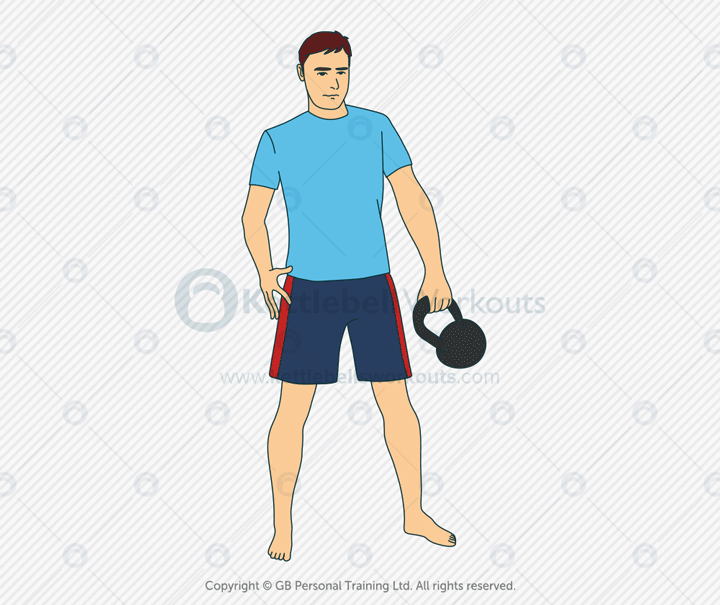
- Reps: 10 each direction
- Purpose: Warms up the core, grip, and hips while practising kettlebell handling. It also improves rotational control and shoulder stability.
Focus on controlled breathing and joint mobility throughout the warm up.
Main Workout: Full Body Kettlebell Hypertrophy
The main session uses supersets to maximise muscle tension and time under load while keeping workouts time-efficient.
Super Set 1
- Kettlebell Clean & Press – 6-8 reps per side. Builds shoulder, triceps, and core strength while challenging coordination.
- Kettlebell Row – 8-12 reps per side. Develops the back, lats, and biceps, balancing pressing work.
- Rest 60-90 seconds, repeat 3 times. Maintain crisp form throughout.
Super Set 2
- Kettlebell Goblet Squat – 10-15 reps. Trains the quads, glutes, and adductors while reinforcing postural control.
- Kettlebell Lunge (front rack) – 8-15 reps per side. Builds unilateral leg strength, core stability, and balance.
- Rest 60-90 seconds, repeat 3 times. Focus on controlled movement and depth.
This full-body workout stimulates hypertrophy while also improving mobility, balance, and joint health—key elements for sustainable muscle growth.
How to Progress Your Kettlebell Muscle Workouts Over Time
Building muscle with kettlebells is about progressing intelligently as your body adapts. Here’s how to scale your training based on experience:
Beginner
- Use one kettlebell only: Focus on mastering form and developing joint resilience.
- Higher reps (12-15): This range helps build a foundation of muscular endurance and control without overloading the joints.
- Longer rest between sets (90-120 seconds): Allows for full recovery to maintain good technique and avoid form breakdown.
Intermediate
- Use double kettlebells when possible: This increases loading and challenges stability, core strength, and grip endurance.
- Mix rep ranges (6-12 reps): Target different muscle fibres and promote hypertrophy through varied stimulus.
- Reduce rest between sets (60-90 seconds): Elevates intensity and increases metabolic stress, a key driver of muscle growth.
Advanced
- Use tempo control (3s down, 1s up): Increases time under tension for maximum hypertrophy stimulus.
- Increase total volume (4-6 sets): Pushes muscle-building capacity without compromising joint integrity.
- Add mechanical advantage drop sets: For example, switch from double kettlebell presses to single-arm push presses without rest to extend the set and increase muscle fatigue.
Progression doesn’t mean going heavier every session; it’s about consistently challenging the muscles through smarter training variables.
Nutrition and Recovery for Muscle Growth
Muscle growth happens outside the gym. Without proper recovery and nutrition, your training efforts will stall. Here’s how to optimise both:
- Protein intake: Aim for 1.6-2.2g of protein per kilogram of bodyweight daily. This provides the amino acids necessary for muscle repair and growth.
- Calorie surplus: Building muscle requires extra energy. Eat in a slight surplus, enough to fuel growth but not so much that you add unnecessary fat. Track your weight weekly and adjust food intake accordingly.
- Whole foods focus: Prioritise nutrient-dense meals with lean proteins, complex carbs, healthy fats, and plenty of vegetables. Avoid highly processed foods that don’t support recovery.
- Hydration: Muscle tissue is over 70% water. Dehydration can reduce performance and recovery.
- Sleep: 7-9 hours of quality sleep each night is essential. Sleep is where most of your recovery and growth hormone release happens.
- Rest and recovery days: Limit heavy training to 3-4 days per week. Active recovery like walking or mobility work helps reduce soreness and keeps joints healthy.
- Stress management: High cortisol from stress can blunt muscle growth. Incorporate breathing exercises, meditation, or downtime to balance your training load.
Remember, building muscle is a full-system process. Training is just the stimulus, nutrition, sleep, and recovery are where the real gains happen.
Coach’s Insight: Greg’s Take
I’ve used kettlebell hypertrophy programs with hundreds of clients who thought they couldn’t build muscle without barbells. Time and again, they’ve added size, fixed imbalances, and felt stronger in daily life without the joint pain of traditional lifting.
The key is consistency, smart exercise selection, and gradual overload, not trying to max out every session.
Final Thoughts on Kettlebell Muscle Building
Kettlebell training isn’t just for conditioning. If you follow the right approach, you can absolutely build muscle with kettlebells.
Stick to grind-based lifts, choose the right reps and sets, progress week to week, and support your training with smart nutrition.
If you’re looking for a structured kettlebell muscle building program, I have options that guide you step by step, from beginner to advanced.
Building muscle is just one piece of the puzzle. See how kettlebells can help you achieve other goals in my complete training goals guide.
Frequently Asked Questions
Yes. With the right exercises, volume, and progressive overload, kettlebells can build serious muscle.
2-4 times per week, depending on recovery and training experience.
Double kettlebells allow for greater overload, but you can still build muscle with singles if you focus on volume and time under tension.
Too much cardio can interfere with hypertrophy, but conditioning sessions 1-2 times per week are fine.
Men typically start with 12-20kg per bell; women often start with 8-12kg, but always adjust based on control and movement quality.

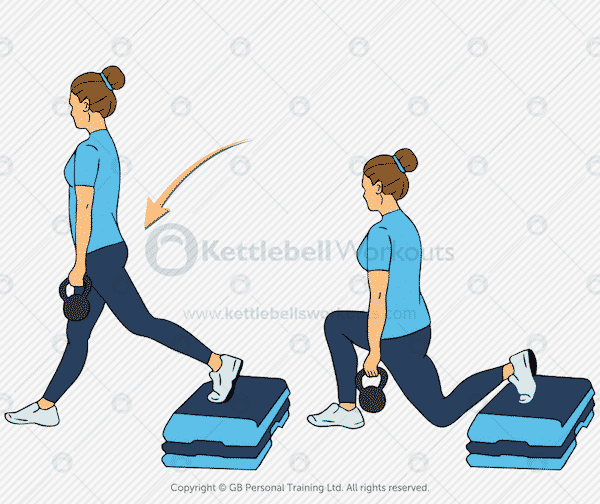
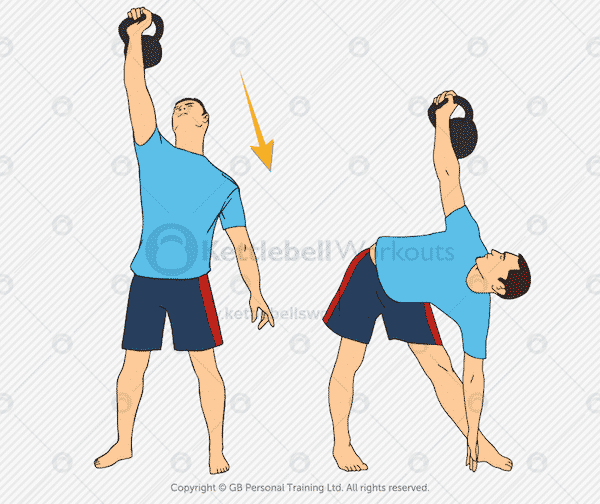

Great explanation
Great article Gregg